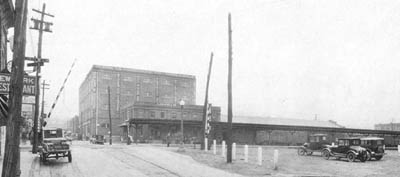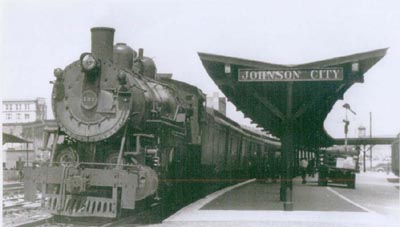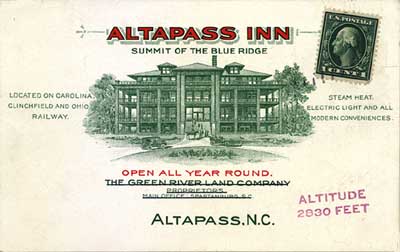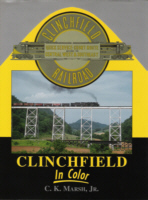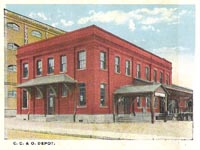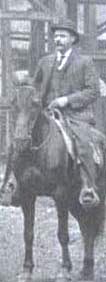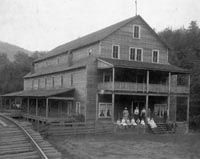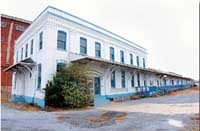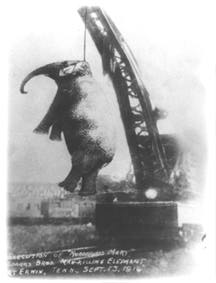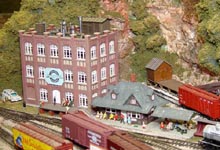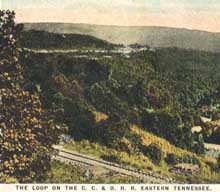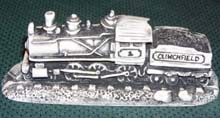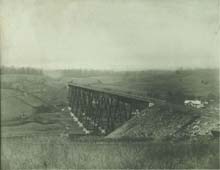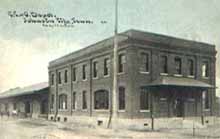South Carolina Senator John C. Calhoun championed a railway from Charleston, South Carolina to Cincinnati, Ohio during the 1830s to connect South Carolina with key markets in other states via inland river routes and emerging railroad systems. This vision was not fulfilled until 1909 when George L. Carter completed the Carolina, Clinchfield, and Ohio Railway, a 242-mile railroad straight across the Blue Ridge Mountain range from Dante, Virginia to Spartanburg, South Carolina. Six years later in 1915, the final 35 miles were completed northward to Elkhorn, Kentucky. The name "Clinchfield" is derived from the coal region of Virginia as the railroad carried the products of the Clinchfield Coal Corporation from the coal fields and mining camps of that region to distant markets in need of coal for fuel.
..... and what a railroad it was. The Clinchfield line was designed and built by Chief Engineer Martin J. Caples to construction standards unheard of for its time. This railroad almost a century after its completion, remains a marvel of construction and civil engineering as it forms the backbone of the CSX railroad system today.
| Video Bio of George L. Carter |
| Look Out for Johnson's - Our New Railroad From the Johnson City Comet; October 28, 1886. Attention is given to the full report of the railroad meeting at Charleston on September 30. From present indications it is only a matter of time of a few months before you will take the train in Johnson City and go to Charleston or Cincinnati without change. Then look out for Johnson's. When the coal of Kentucky and the iron ore of North Carolina meet, Johnson City will be the Birmingham of Tennessee. Land has already been purchased on which to erect furnaces as soon as coal can be brought here at reasonable rates. It is a well known fact that the Cranberry iron makes the finest Bessemer steel and the Kentucky coal has also been found to be the best suited for that purpose. Colonel T. E. Matson has been appointed chief engineer and will make headquarters at Johnson City and will begin locating in both directions from this point. All aboard for Cincinnati! Bus leaves hotel in fifteen minutes. On November 4, 1909, the Comet reprinted the above article in a special edition honoring completion of the Clinchfield Railway and added the following postscript: This (the news article from 1886 printed above) is the first story we ever told about this railroad. Since then we have told many, and some of them were not considered true, but in the light of recent events, they were. We simply got our dates mixed up and missed the time only about twenty-three years. |
|
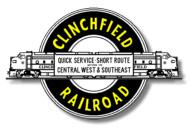
|
|
 |
|
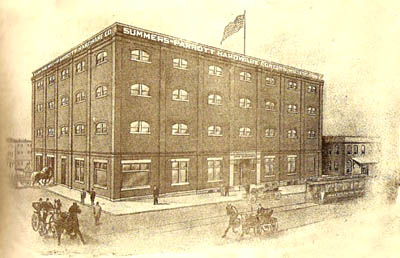 |
|
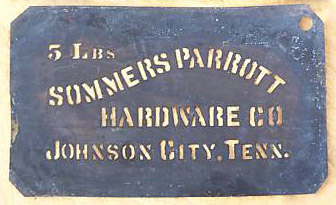 |
|
The Carolina, Clinchfield and Ohio Railway was envisioned in the early nineteenth century as a transportation and commercial route from the Ohio Valley to Charleston, South Carolina, but the Appalachian mountain barrier made its completion a formidable task. Civil War General John Wilder organized interested capitalists and formed the Charleston, Cincinnati, and Chicago Railroad Company on September 30, 1886 (referred to as the Three "Cs"). It was incorporated by the state of Tennessee March 29, 1887. After completing track from Marion to Kingville, North Carolina and from Johnson City to Chestoa, Tennessee, the company suspended operations in the early 1890s. General Wilder and his business partners lost personal fortunes and Johnson City's first economic boom was over. It was uncertain if anyone would or could attempt to fulfill John Wilder's dream of the great Appalachian Mountain railway.
In July 1902 George L. Carter and associates purchased the Ohio River and Charleston Railway Company (the remnants of the failed Three Cs line) reorganizing it as the South and Western Railroad. This sparked an intense rivalry with the Southern Railroad, which made every effort to stop Carter's venture, and even announced and initiated plans to build a competing railway extension along the same route as the South and Western. Under Carter's direction, the railroad extended rapidly northward toward the coalfields and southward toward the Blue Ridge Mountains. Carter secured financing from Thomas Fortune Ryan of New York and what was at the time billed as "The Costliest Railroad in America" was in full motion. By 1908, when the company became the Carolina, Clinchfield and Ohio Railway (CC&O), the rail line stretched from Dante, Virginia to Spartanburg, South Carolina. General offices of the Clinchfield were in Johnson City where George L. Carter resided from 1906 through 1916.
Massive celebrations were held in 1909 in both Johnson City and Spartanburg commemorating the completion of the CC&O Railway. In Johnson City one of the most elaborate gatherings in the City's history took place on April 15 at the Hotel Carnegie with the Presidents of Johnson City's three railroads attending. Congressman Walter P. Brownlow was Master of Ceremonies and speeches, toasts, a banquet meal, and fine cigars were smoked long into the night. Johnson City's most prominent business leaders attended as well as one special guest: General John T. Wilder, the man who started the great railroad and failed to complete it, was honored and made a speech. In Spartanburg thousands of people attended the events held on October 29 and over 1,500 persons attended a barbecue celebrating the first train to arrive on the CC&O Railway.
George L. Carter and his scenic Clinchfield Railroad shaped
Johnson City's destiny more than could have been envisioned in
1909. The Clinchfield gave Johnson City access to its second trunk line
(in addition to the Southern) with the ET&WNC being the connector
line serving both larger railways. The relationship of the three railway
lines and the strategic location for regional
commerce in the vicinity of Henry Johnson's Depot resulted in another
decade of growth. As was true with most of the legendary railroad builders,
George L. Carter was developing towns and cities along his rail line including
the new "model industrial town" of Kingsport. In Johnson City
East Tennessee State University, the
Tree Streets neighborhood,
the Model Mill (General Mills) the Ashe Street Post Office were all part
of George L. Carter's handiwork and byproducts of the Clinchfield Railroad.
 |
|---|
| Rendering of the Clinchfield Depot in Johnson City after Restoration |
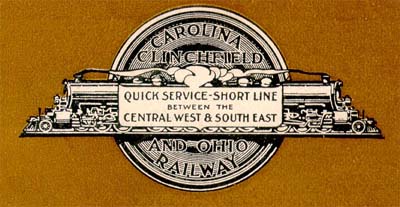 |
Original Logo for Clinchfield Railway - 1908 |
Clinchfield Engine 151 at the Johnson City Station |
|
"Clinchfield in Color" by Ken Marsh |
|
|||||||||||||||||||||||||
|
|||||||||||||||||||||||||
|
Links
|

